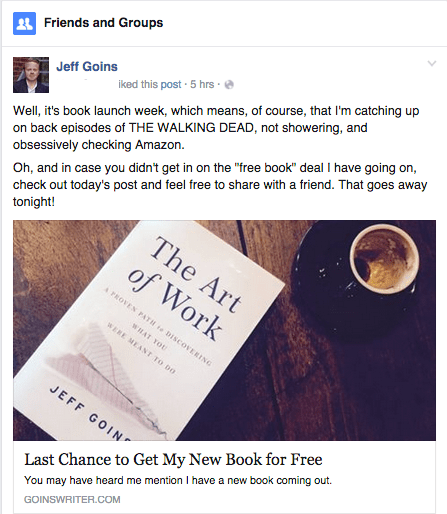As a business owner, traffic is vital to your company’s success. But recent events are already bringing entire operations to a screeching halt.
As a business owner, traffic is vital to your company’s success. But recent events are already bringing entire operations to a screeching halt.
While the COVID-19 crisis continues, many owners are struggling to cope with the virus’s impact on their business and their employees’ livelihoods. And for those not bearing the brunt of the impact just yet, it’s become difficult for businesses to bring traffic to their cause.
If you are cutting back on your business’s operation while adjusting to the ramifications of the new normal, you may be stressed trying to generate buzz for your products or services. But with more eyes on social media, there isn’t a better time to start crafting organic relationships with your consumers at a fraction of the cost.
It’s time to use organic reach to your advantage.
Finding a Better (Cost-Effective) Way
Organic reach is a common metric used in social media marketing to track the number of unique individuals viewing your content without paid advertising. A strong organic reach can directly benefit your sales funnel by generating leads via authentic individuals who view your content without utilizing paid media strategies like boosting.
Unfortunately, organic reach on Facebook and Instagram has declined in drastic fashion over the past few years, due in part to greater competition for ad space on users’ news feeds and changes to their respective algorithms. As a result, many companies have turned to paid media out of necessity to build their social presence.
But there’s still hope! Organic reach is still a fundamental metric on social media that can generate traffic and engagement with the right approach. With a bit of strategy and creativity in your content strategy, your business can stand out and create unique connections with your target audience.
Whether your business is on Facebook, Instagram, or another social platform, here are some tips on mastering organic reach and maximizing your content’s thumbprint on a budget:
Understand the Algorithms
Each social platform has undergone changes to its respective algorithms, tailoring content to specific users based on the platform’s specifications. To ensure you’re achieving strong organic reach from your content, make sure to understand the ins-and-outs of each social platform’s algorithms to effectively reach your target audience.
For instance, Facebook’s algorithms have adjusted in the past few months to correspond with its paid advertising measurements. Ranking well with these algorithms is also dependent on various factors, including who a user typically interacts with, the post type, and the popularity of the post itself.
By understanding each platform’s intricacies in greater detail, you can equip your business with vital knowledge on how to best position your future content.
Post Consistently
Consistent posting is key to growing your business’s organic reach. Businesses that post consistently see higher engagement rates, which in turn leads to higher organic reach.
Posting once or twice a month is like being open for business once or twice a month, and then wondering why customers are flocking through your doors. If you post infrequently, your potential customer will begin to form an opinion about your business. Think of restaurants with little or no patrons… Do you want to eat at a restaurant when you’re the only customer there?
Quality and Timeliness Matter for Content

Consider the type of content you’re posting on social media, and consider the trending topics of the day and how your business can ride the wave of increased engagement.
As an example, author Jeff Goins loosely incorporated ‘The Walking Dead’ into his social post while the topic was trending to benefit from the trending topic for his book launch.
Resist the Bait
Don’t get caught using deceptive social practices. Social platforms have begun cracking down on baiting tactics, ensuring that users follow the platform’s rules or pay the price.
Using paid followers, spamming irrelevant content, and using engagement bait are just a few instances of practices that can be detrimental to your business’ social media strategy and reputation among your followers.
Automate and Elevate Your Content Flow
Sometimes, you can also leave your social media content flow to the pros. Enter ThumbStopper.
At ThumbStopper, we work with thousands of business partners to automatically post high-quality, brand-curated digital content for the retailers that sell their products. This, in turn, has contributed to a 22% average organic reach among our retailer subscribers.
If your company is looking for digital content that makes an impact on a budget, we’ve figured out the ins-and-outs of maximizing our partners’ social thumbprint and helping them focus on engaging with their consumers.
Whether your business has or hasn’t been affected by recent events, it may be time to pivot your social media strategy to address organic reach. With a mix of strategy and creativity, you can cut back on costly techniques that don’t secure the right audience and focus on building authentic, organic relationships with your consumers through organic reach.




